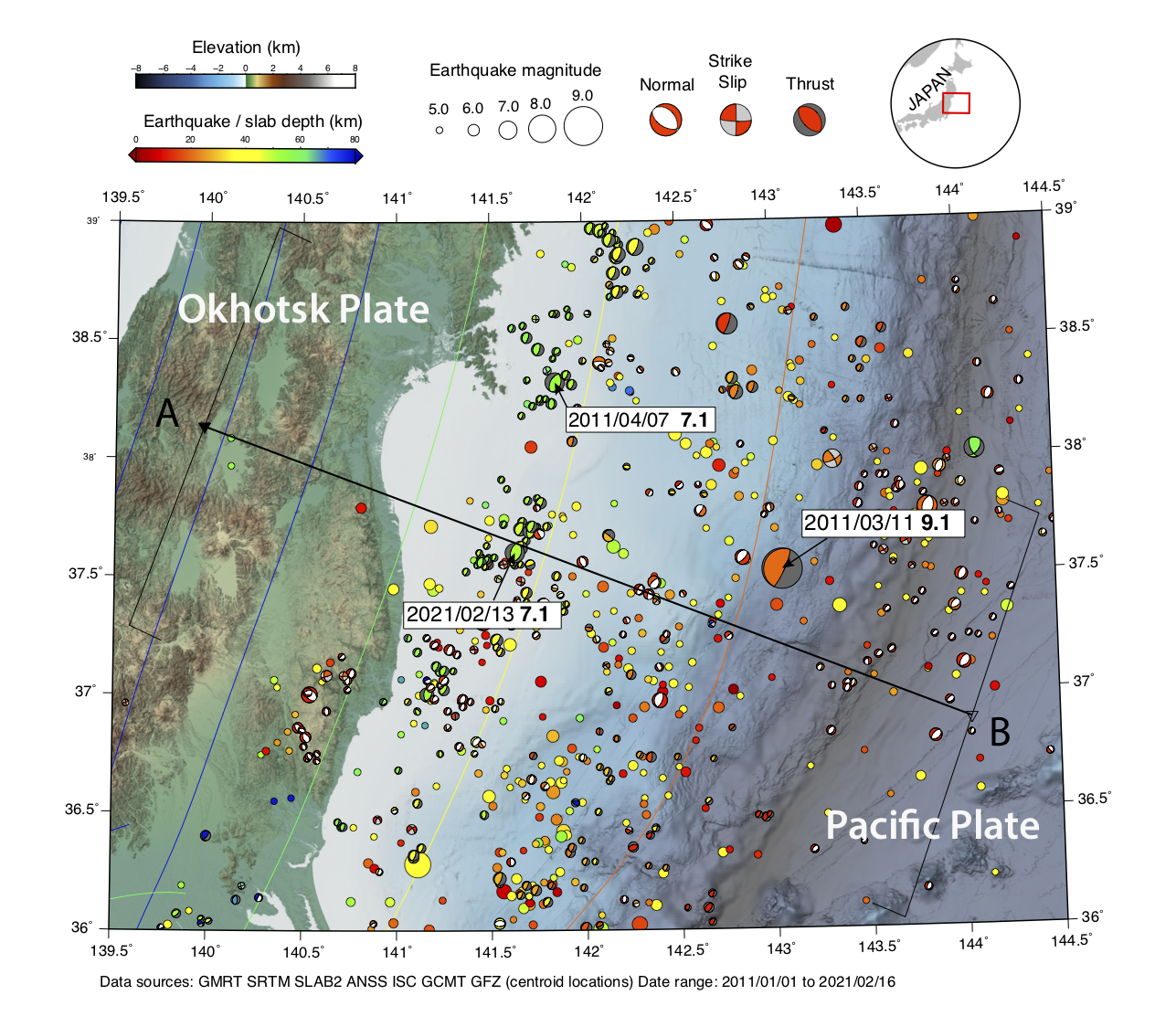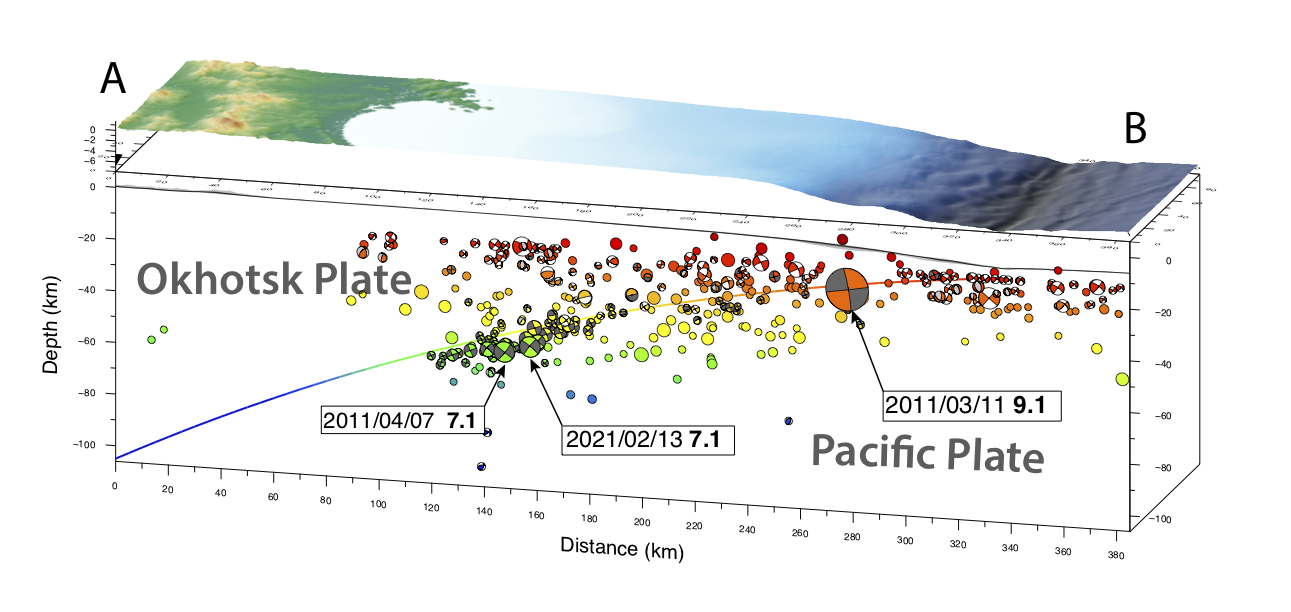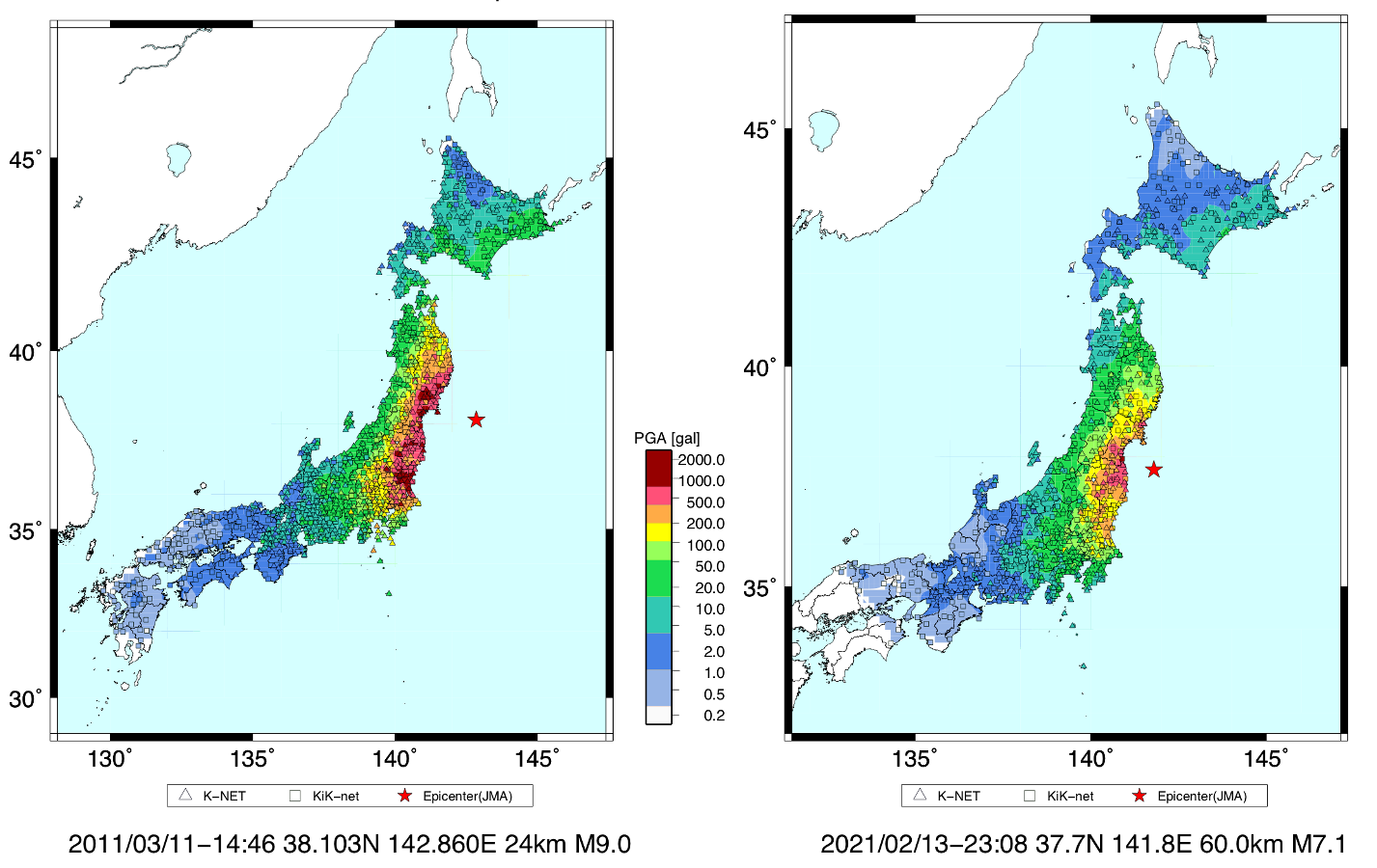A Mw 7.1 earthquake struck Japan on 13 February 2021 at approximately 11:07pm (Japan local time). According to the United States Geological Survey, the earthquake occurred at a depth of about 50 kilometres (km) and about 70 km from the town of Namie, off the east coast of Honshu. The event was widely felt, injuring more than a hundred people and damaging some infrastructure.
“This earthquake is not particularly unusual or unexpected for this region, but it is noticeably larger than most recent events this deep and this close to the coast,” said Dr Kyle Bradley, a Principal Investigator at the Earth Observatory of Singapore (EOS).

The event is another likely powerful aftershock of the Mw 9.1 event
The event occurred nearly 10 years since the Mw 9.1 Tohoku event which devastated the region on 11 March 2011 and led to many aftershocks.
“A similar Mw 7.1 earthquake occurred in April 2011, one month after the Mw 9.1 mainshock, and also produced widely felt ground shaking,” said Assistant Professor Shengji Wei, a Principal Investigator at EOS. Saturday’s event is one of the 6 earthquakes of magnitude higher than 7 that have occurred in the region since the Mw 9.1 event.
These aftershocks, like the Mw 6.9 event that shook the country in November 2016, occur when faults are subjected to increased stress following a large earthquake.
The intra-slab event generated strong ground motion
By looking at the shaking recorded by the stations across the country, Asst. Prof Wei commented that “the earthquake is likely located within the subducted Pacific slab and is therefore an intra-slab event.”

“Such events have a larger stress drop than the plate interface events, so they generate stronger ground motion,” he added. Although the maximum acceleration of the ground, also called peak ground acceleration (PGA), from Saturday’s event is half the magnitude of that of the Mw 9.1 event, both events generated a PGA with similar spatial distribution.

“This stronger high frequency energy released by the earthquake is particularly dangerous for the Fukushima nuclear power plant and other infrastructures, as the resonance frequency of most of the infrastructures is between 1-10 Hz,” said Asst. Prof Wei. “Although the nuclear power plant was mostly damaged by the tsunami of the 2011 event, the strong ground motion is also of big concern.”
More earthquakes are expected in the coming weeks
“Japan should be on alert, as they will likely experience more large earthquakes in the coming days and weeks,” said Asst. Prof Meltzner. “Most likely, none of those coming earthquakes will be as large as Saturday’s earthquake, but there is a slightly elevated risk compared to a week ago of an earthquake larger than Mw 7.1 in the days and weeks ahead.”